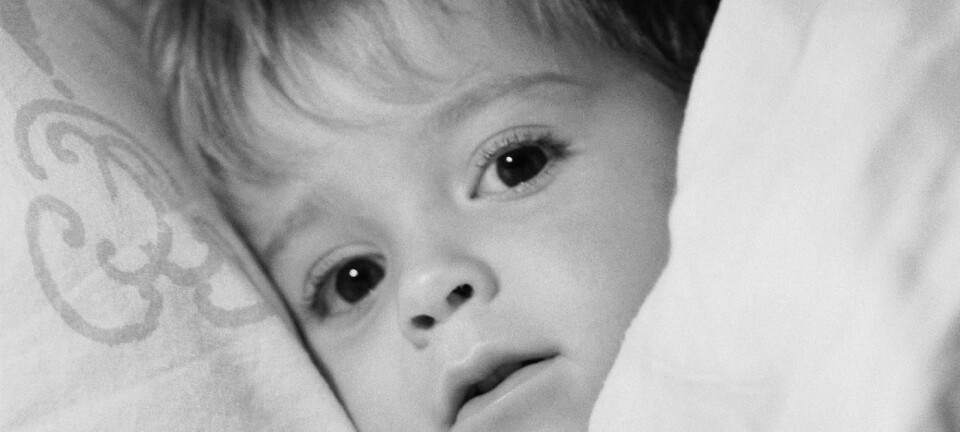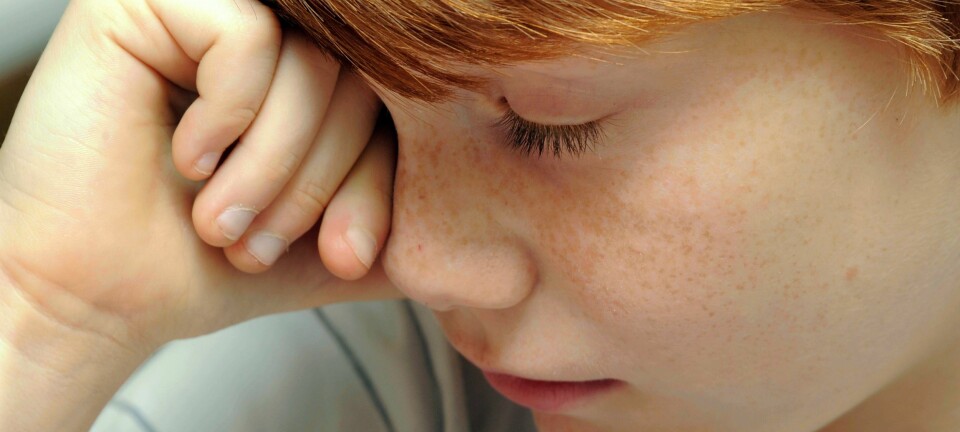
Young foster children seem as secure as other kids
Two- and three-year-old foster children tend to feel as secure in their attachments to their foster parents as other kids do with their parents.
Denne artikkelen er over ti år gammel og kan inneholde utdatert informasjon.
“This is a gratifying discovery about foster children,” says Heidi Jacobsen of the Center for Child and Adolescent Mental Health, Eastern and Southern Norway.
“A secure attachment can be critical in how well children will do later in life.”
Jacobsen has taken her doctorate in psychology at the University of Oslo with a study of how well children aged two and three form attachments with their caregivers in foster homes.
Nine out of ten children in Norway who cannot live with their parents are placed in foster homes. They total 10,000 in all, according to the Norwegian Directorate for Children, Youth and Family Affairs.

Foster children are often considered to have more than their share of problems. But Jacobsen’s findings show that younger foster kids are no better or worse off than kids living with their biological families when it comes to forming caregiver attachments. This is an indication that foster children can grow up happily in foster homes.
Nearly 7 out of 10 are secure
Nearly 70 percent of foster children have a secure attachment to at least one of their caregivers. This is the same share as is found in studies of other kids.
Studies conducted internationally show that 60 to 70 percent of all children in all types of families have this kind of secure attachments.
Jacobsen says this is the first survey of attachment security among young foster children in Norway.
Trusting others
Children with secure attachments view the world as a safe place. When they encounter something painful in their surroundings, they have someone to turn to for consolation and help. This enables them to go back and continue probing and exploring their environment.
“They trust others and themselves. A secure attachment is an important part of child development. They can get along better in close relationships, find it easier to enter friendships and tackle stress,” says Jacobsen.
“This is also important for developing self-confidence. A child sees his or herself as a person of value,” she adds.
Insecure children are not as skilled when confronted with new experiences and new people. They are more reluctant to seek help or consolation if anything goes awry. They may have found that it is of no use to ask for help, and have given up trying.
Jacobsen stresses that this kind of insecurity as a child does not rule out developing the ability to cope well later in life.
Dare to play
Jacobsen and her colleagues observed children in unfamiliar situations, a playroom where the kids had never been before. Parents left the room and the child was alone with a stranger. The researchers were particularly observant of how the child reacted when their caretaker returned.
A secure child expresses recognition, often happiness, upon being reunited. If the was child crying, he or she will eventually stop when the parent re-enter. Then the child will return to playing with the new toys. An insecure child might be disconsolate and hesitant about playing with the toys again.
The children were studied at age two and then again at age three. Most of those who were secure at age two were also secure a year later.
Move the kids early
Jacobsen's study was comprised of 60 children placed in foster homes, and 42 children who did not live in foster homes who were used for comparisi. This is too small a group to generalise and say anything certain about all foster children in Norway.
“But it can give a picture of the prerequisites for security,” says Jacobsen.
All the children were moved to foster homes before the age of two. Their average age when transferred to foster families was eight months.
“If a child is going to be moved to a foster home, that child should be moved at an early age,” recommends Jacobsen.
The first year of life is said to be vital for children’s attachments. Jacobsen thinks that coming to new parents while are very young can have an effect on how secure the child's attachments will be to their foster parents.
Hard to make frequent moves
The study says nothing about the consequences of time as a factor in determining how secure a child feels in a foster home. But a study from the USA that followed foster children for ten months showed that kids got attached to their foster parents after just two months.
“It’s important for the child welfare services to know that the attachment occurs fast,” says Jacobsen.
She thinks it os unfortunate that many foster children have to be transferred from home to home, repeatedly.
“Studies show that stability is a crucial factor in the life of a child. Attachments are about security. But this [practice of successive placements] is just the opposite – the child get the idea that nobody wants it,” explains Jacobsen.
“Attachments are often not assessed among older children,” she adds.
Foster children have more issues to deal with
The young children whom Jacobsen studied did have greater emotional, social and intellectual problems than the children who were not in foster homes.
Their biggest difficulty was in solving tasks, such as putting together puzzles. The foster children tended to externalise or act out and misbehave more by getting angry and being noisy, for example. On the average they had slightly greater difficulties regulating their emotions, such as calming down after becoming upset.
If these kinds of problems continue to develop they can lead to behavioural or mental disorders. But for the group as a whole, there were no grounds for concern.
This does not rule out the possibility that difficulties will crop up later in life.
“We want to follow up on these children and see how they get by as they age,” says Jacobsen.
“We know that a secure attachment is not a guarantee that things will go well later on in life. Will they still be struggling more to solve problems later? How will their attachment characteristics develop if they have to switch again to new families? No Norwegian studies have followed young foster children for periods of many years.”
------------------
Read the Norwegian version of this article at forskning.no
Translated by: Glenn Ostling
Scientific links
- Attachment security in young foster children: continuity from 2 to 3 years of age, Attachment & Human Development, Vol. 16 nr. 1, 2014. (Abstract).
- Cognitive Development and Social-Emotional Functioning in Young Foster Children: A Follow-up Study from 2 to 3 Years of Age, Child Psychiatry & Human Development, Okt. 2013, Vol. 44, nr.5. (Abstract).

































